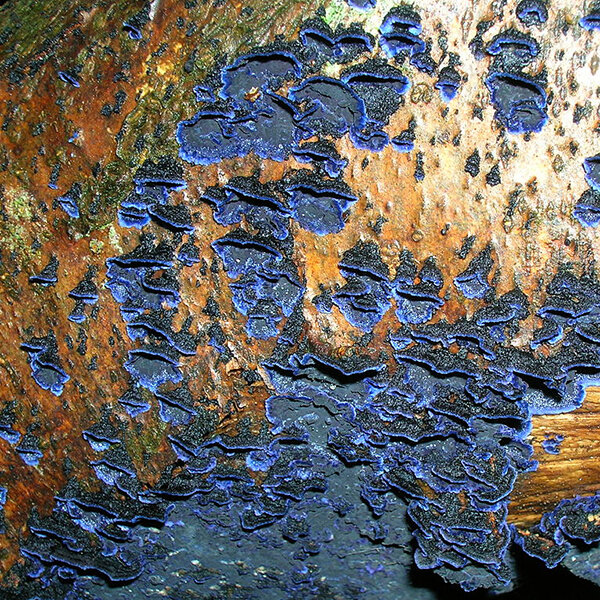Cobalt Crust
Terana caerulea
This vibrantly coloured species is known as a crust or resupinate (flattened against the surface) fungi. It can be found saprophytically growing on woody substrates, particularly Ash (Fraxinus excelsior). Saprophytes obtain nourishment from dead or decaying organisms. It is especially striking and beautiful when young and fresh with its bright cobalt blue colouration.
The flesh is waxy and soft when wet, hard and crusty when dry. The fruiting body is tightly attached to the substrate but sometimes looser along its margins. It forms irregular large patches with smooth or bumpy/warty surfaces that are finely velvety, and is very thin generally < 1mm thick. The outer margins are pale, often white and fringed, whilst older specimens become darker in colour and eventually almost black.
It is considered uncommon in the UK, but can be found in many woodlands in south Wales.
Where and when to see them
It can be seen all year round.
Make sure you check the undersides of branches and logs carefully. The conspicuous blue colour makes it unlikely to be overlooked, but often grows along the underside of branches and logs so can be missed.
View a cobalt crust 10km distribution map of Wales.
Legal status
None
Did you know?
The spore print (the coloured pattern produced when spores are discharged onto white paper) is a bluish white. This fungus is completely tasteless and has no culinary value.
! Some fungi are very poisonous and many others could make you very unwell if ingested. Do not eat any fungi unless you are confident in identifying the species or have consulted an expert. If in doubt, stick to the supermarket !


